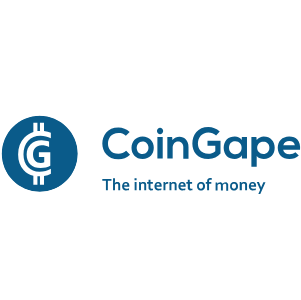

Bitfarms: The Adverse Ripple Effect Of 'Slow And Steady'
Summary The "Slow and Steady Lose The Race" thesis carried deeper implications for BITF and the broader Bitcoin sector than initially thought. Through BITF, we showed that "Slow and Steady" is more detrimental than good where its adverse impact is directly proportional to the inability to expand. This observation transformed BITF's 6.5% quarterly shareholder dilution from a source of weakness into a source of strength. We also showed how a sector-wide consolidation can be brought about and how BITF is positioned better to benefit from it. Our BITF outlook may have improved, but BITF's high valuation (2.9x adj Book value) suggests exercising patience. Introduction In our previous article , we noted an emerging risk of consolidation in the Bitcoin ( BTC-USD ) mining sector. We coined this observation as the "Slow and Steady Lose The Race" thesis. We initially made this observation through Bitfarms ( BITF ) but slowly realized that this risk was becoming more probable. In addition, we also uncovered some resulting adverse ripple effects. Therefore, the objective of this article is to fill in the gap left behind by our previous article. We highly recommend reading our Bitcoin 2024 outlook and our base thesis on BITF for better context. The Adverse Ripple Effect of "Slow and Steady" The primary focus of our base thesis was on (1) the implications of BITF's declining Bitcoin production and (2) the drivers behind the problem's persistence. We argued that the eventual outcome is the constant decline of Bitcoin production (revenue, or top line) to the point of business infeasibility. Iris Energy ( IREN ) and Hut 8 Corp . ( HUT ) also fall into the same bucket of miners facing this problem. This is a fundamental problem, not a valuation problem. Therefore, the path to the solution (aggressive growth) is not simple and some might not make it. The gravity of this problem will also cause adverse ripple effects unsystematically (within the company) and systemically (within the entire Bitcoin market). The Undoing of Cost-Saving Initiatives The first adverse ripple effect is the undoing of cost-saving initiatives. This was first observed in HUT. HUT was impressive in cutting its cost by 44% compared to about 1 year ago (Table 1). Hence, it is understandable for investors to assume an increase in profitability even if production decreases slightly. But data says otherwise. HUT's cost for mining 1 Bitcoin spiked in the opposite direction by 83% (double the rate of total cost) from its best quarter during the period because Bitcoin declined more than the cost savings. Hence, the undoing of cost-saving initiatives. This is quite astonishing. Since Bitcoin traded around $30,000 on average in 2023, it is no wonder HUT was still unprofitable on the back of such cost-saving initiatives. Table 1. HUT's Bitcoin Mining Per BTC Quarter ((CY)) Total Mining Cost ($mil) Bitcoin Production Total Cost per BTC 2023Q3 26.6 330 80,606 2023Q2 28.225 399 70,739 2023Q1 33.695 475 70,937 2022Q4 41.8 698 59,885 2022Q3 44.025 982 44,832 2022Q2 46.8 946 49471.4588 Source: Author A similar disproportional increase in cost per Bitcoin can be observed in BITF (Table 2). Unlike HUT, BITF was expanding despite the decline in Bitcoin production. BITF's capacity rose from 4.2 EH/s in 2022Q3 to 6.1 EH/s in 2023Q3. This expansion brought higher depreciation costs (more equipment) and operating costs (personnel, electricity, and hosting costs). Hence, total costs increased (33%). Under normal circumstances, we would expect the cost per BTC would be flat (negated by higher Bitcoin production). Here, the ripple effect increased the cost per Bitcoin disproportionally (72%, more than double the rate of total cost). Table 2. BITF's Bitcoin Mining Per BTC Quarter Bitcoins Mined Total Mining Cost [3] ($mil) TMC per BTC ($) Built-up Hash Rate (EH/s) 2023Q3 1,172 52.3 44,600 6.1 2023Q2 1,223 50.5 41,300 5.3 2023Q1 1,297 34.56 26,600 4.8 2022Q4 1,434 49.1 34,200 4.5 2022Q3 1515 39.3 25,900 4.2 Source: Author Thus, we can make the case that "Slow and Steady" is more detrimental than good, contrary to popular beliefs favoring "slow and steady" in the Bitcoin mining sector. Going even further, we even state that: The risk of sector consolidation or "Slow and Steady" is directly proportional to the inability to expand. This observation flipped our opinion on BITF's 6.5% quarterly shareholder dilution. Instead of perceiving it as a risk, investors should perceive it as an advantage. Hence, aggressive expansion is still the right path forward. What if we further extrapolate from here? What else can this relationship imply? A Winner-Takes-All Market Can Benefit BITF If we extrapolate this relationship further, we can project some form of consolidation happening in the Bitcoin mining sector. In other words, mining companies that are expanding too slowly will see their top line and bottom chip away gradually until the business is no longer financially feasible. Then, these mining companies might either merge or get acquired by stronger mining companies or just cease and liquidate altogether. If a mining company ceases operation, the overall Bitcoin network hash rate will drop which increases the network share of the surviving mining companies. These are forms of consolidation because the Bitcoin network will be occupied by fewer but bigger players. We've already witnessed such consolidation in 2023. HUT , which suffered an expansion bottleneck, decided to merge with USBTC to increase its capacity (from about 3 EH/s to 7.5 EH/s). Here are several reasons why we think that BITF has the potential to benefit from this consolidation: BITF's cost basis is still relatively lower than its comps (Table 3) which positively contributes to its resilience. This resilience can help BITF outlast competitors and capture more network share. BITF can reverse its declining network share and further decrease mining costs if it can meet its 12 EH/s guidance . Table 3. Bitcoin Mining Costs Comparison Company Total Mining Cost per BTC ($) ((BITF)) 44,600 CLSK 33,000* RIOT 65,900 ((IREN)) 33,640 (( HUT )) 80,606 HIVE 53,700 Source: Author; *averaged, $60,452 if most recent is used. Verdict After a series of analyses, a simple observation of declining BITF production has turned into a thesis for a potentially broader sector consolidation. Moreover, we now also have a deeper understanding of the resulting ripple effect on BITF. Although our BITF outlook has improved after this analysis, it is still difficult to justify BITF's current 2.9x adjusted book value valuation (the highest among comps, Table 4). Also, BITF dilutes shareholders by 6.5% quarterly on average. Therefore, we think that investors should exercise patience. That being said, we still expect all miners to benefit positively from a Bitcoin bull run, regardless of their fundamental strength, until something breaks (like Soluna Holdings ( SLNH ) and Core Scientific ( CORZ )). We strongly recommend giving our thesis on SLNH's downfall Table 4. Comps Comps Price-Adj Book Value Multiple ((CLSK)) 2.13 ((RIOT)) 1.55 ((BITF)) 2.9 ((IREN)) 1.1 ((HUT)) 2 ((HIVE)) 2.58











